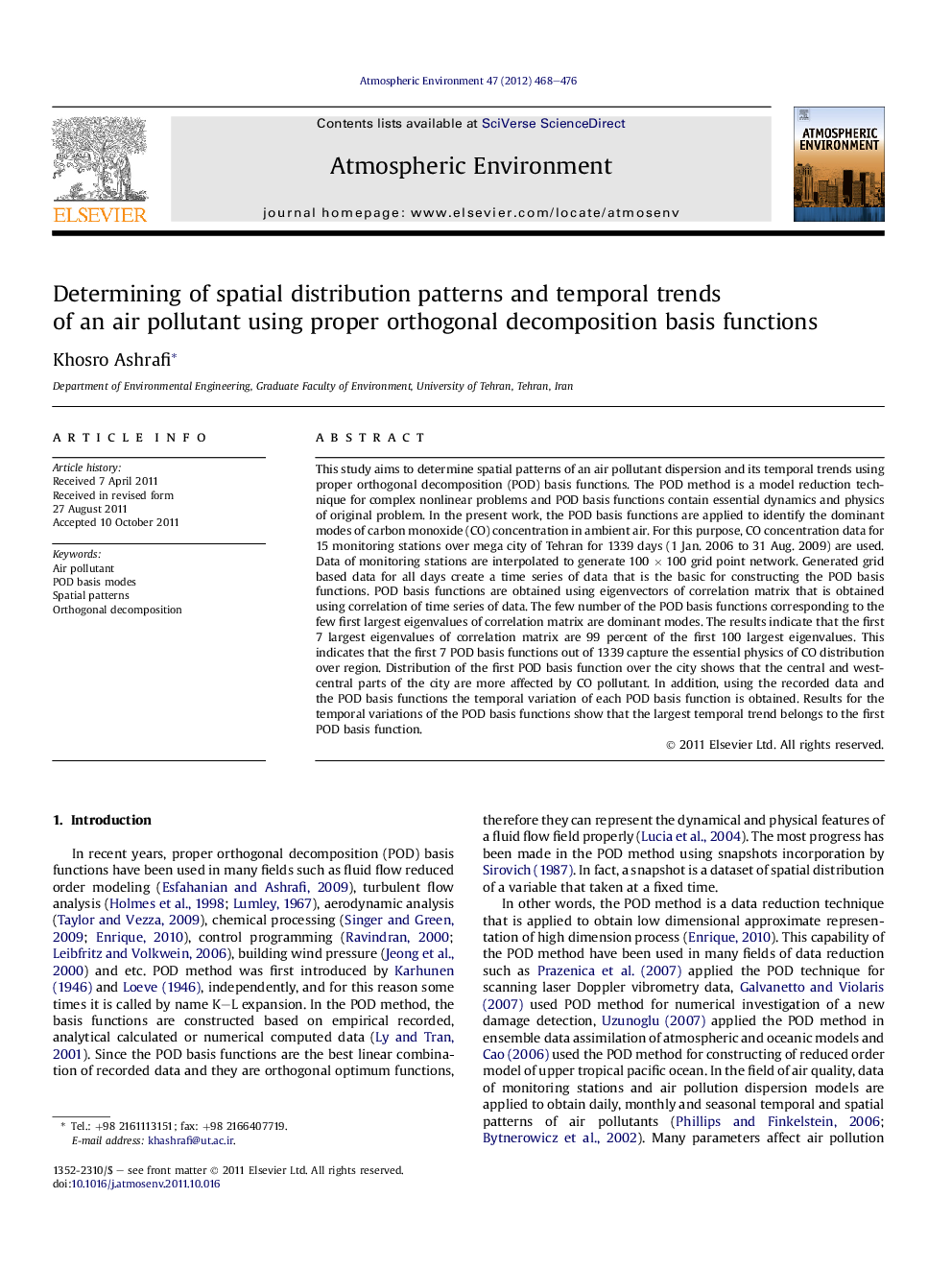| Article ID | Journal | Published Year | Pages | File Type |
|---|---|---|---|---|
| 4439037 | Atmospheric Environment | 2012 | 9 Pages |
This study aims to determine spatial patterns of an air pollutant dispersion and its temporal trends using proper orthogonal decomposition (POD) basis functions. The POD method is a model reduction technique for complex nonlinear problems and POD basis functions contain essential dynamics and physics of original problem. In the present work, the POD basis functions are applied to identify the dominant modes of carbon monoxide (CO) concentration in ambient air. For this purpose, CO concentration data for 15 monitoring stations over mega city of Tehran for 1339 days (1 Jan. 2006 to 31 Aug. 2009) are used. Data of monitoring stations are interpolated to generate 100 × 100 grid point network. Generated grid based data for all days create a time series of data that is the basic for constructing the POD basis functions. POD basis functions are obtained using eigenvectors of correlation matrix that is obtained using correlation of time series of data. The few number of the POD basis functions corresponding to the few first largest eigenvalues of correlation matrix are dominant modes. The results indicate that the first 7 largest eigenvalues of correlation matrix are 99 percent of the first 100 largest eigenvalues. This indicates that the first 7 POD basis functions out of 1339 capture the essential physics of CO distribution over region. Distribution of the first POD basis function over the city shows that the central and west-central parts of the city are more affected by CO pollutant. In addition, using the recorded data and the POD basis functions the temporal variation of each POD basis function is obtained. Results for the temporal variations of the POD basis functions show that the largest temporal trend belongs to the first POD basis function.
► POD method applied to identify dominant spatial and temporal mode of CO pollutant. ► Daily averaged concentrations of CO data for 1339 days are used as snapshots. ► Eigenvalue and eigenvector analysis showed that 7 modes are more dominant. ► Distribution of the first mode affects the central and west-central, of the city.
